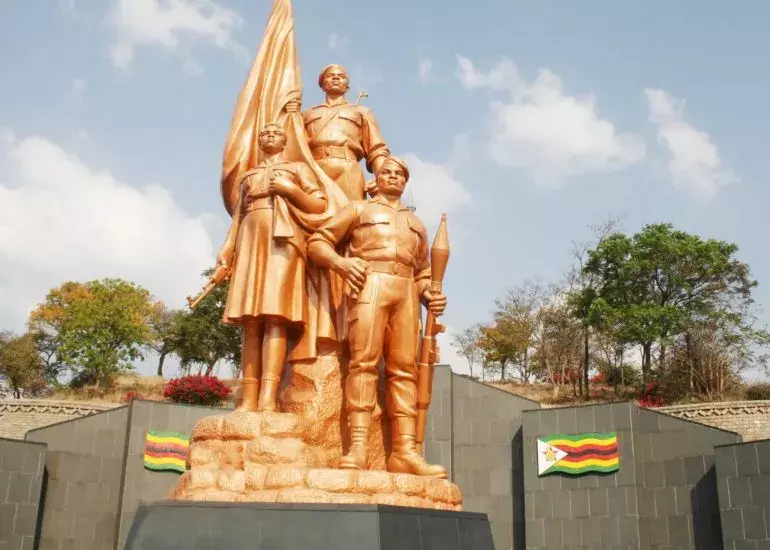National Heroes Acre

- The National Heroes Acre in Harare, Zimbabwe, is a revered shrine and national monument dedicated to the country’s liberation struggle heroes. Located about 7 kilometers west of the city center, this grand burial site was established in 1981, shortly after Zimbabwe gained independence from British colonial rule. It serves as the final resting place for individuals who played pivotal roles in the fight for freedom and sovereignty, particularly during the Second Chimurenga (1964–1979), the war that led to Zimbabwe’s independence. The site is a symbol of patriotism, sacrifice, and national pride, attracting both locals and international visitors who wish to learn about Zimbabwe’s history.
- The architectural design of National Heroes Acre is both striking and symbolic. The site features a 75-meter-tall Independence Flame, which burns perpetually to represent the enduring spirit of freedom. The Tomb of the Unknown Soldier, situated at the heart of the monument, honors the countless unnamed fighters who perished in the liberation war. Surrounding this central area are several bronze statues, including a commanding statue of three guerrilla fighters, depicting the bravery and unity of those who fought for Zimbabwe’s independence. The entire complex is built in a manner inspired by ancient Great Zimbabwe ruins, symbolizing the nation’s rich historical heritage and resilience.
- One of the most significant aspects of National Heroes Acre is the burial section, which holds the graves of some of Zimbabwe’s most notable national figures. Those buried here include Josiah Tongogara, a prominent military strategist of the Zimbabwe African National Liberation Army (ZANLA), Sally Mugabe, the former First Lady and independence activist, and Simon Muzenda, a longtime vice president of Zimbabwe. Each grave is marked with a black marble headstone, and the site continues to be used for state funerals of individuals accorded national hero status. The process of selecting heroes is conducted by the ruling government, sparking political debates over the years regarding who qualifies for this prestigious honor.
- Beyond its function as a burial site, National Heroes Acre is an important educational and historical landmark. The site features a museum that showcases Zimbabwe’s struggle for independence, with artifacts, photographs, and documents that provide deeper insight into the liberation movement. It is a key destination for school tours, history enthusiasts, and tourists seeking to understand Zimbabwe’s past. Every year, on Heroes’ Day (celebrated in August), the monument becomes the focal point for national commemorations, attended by government officials, war veterans, and citizens honoring the sacrifices made for Zimbabwe’s sovereignty. National Heroes Acre remains a profound symbol of Zimbabwe’s journey toward self-determination and national unity.
